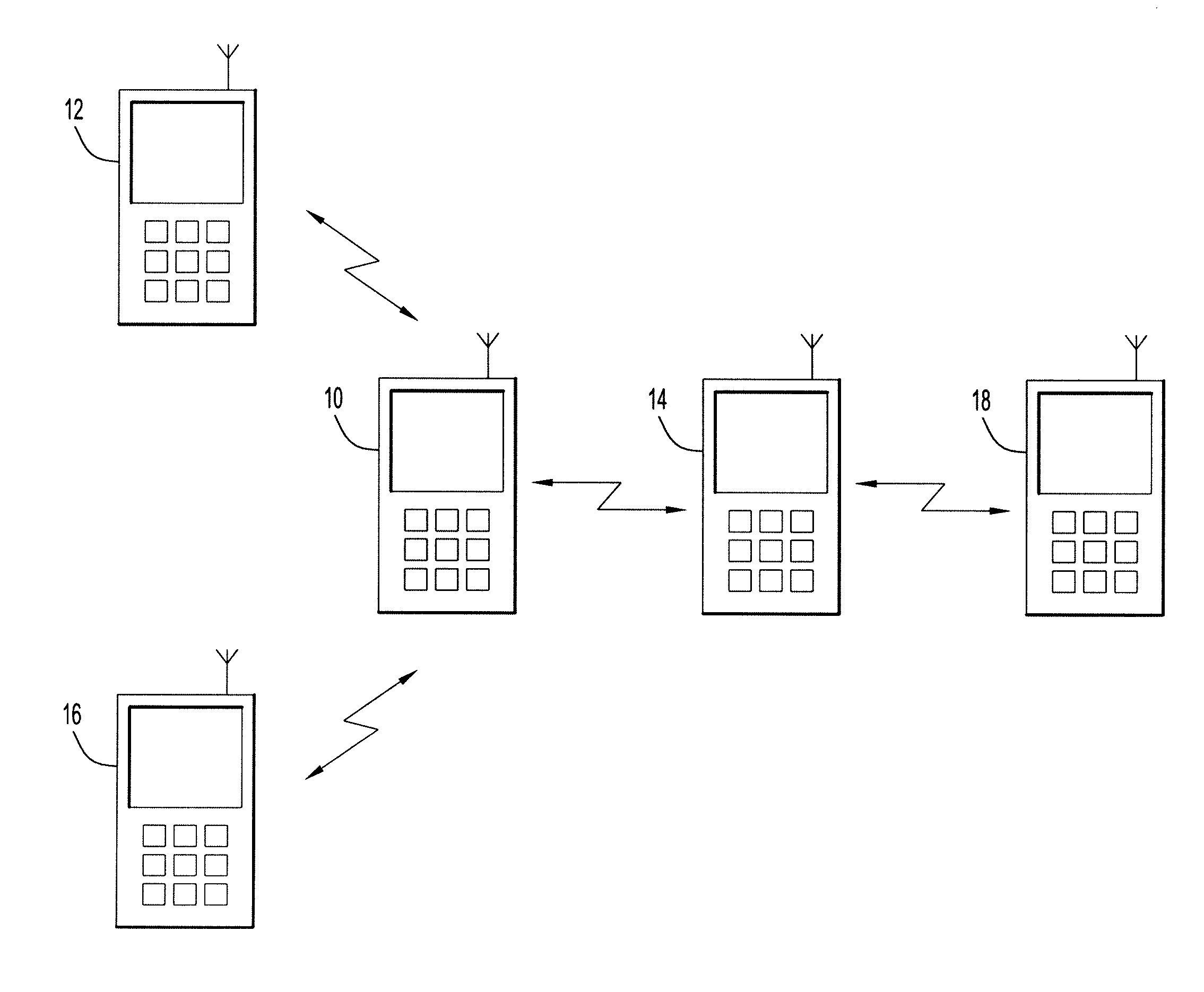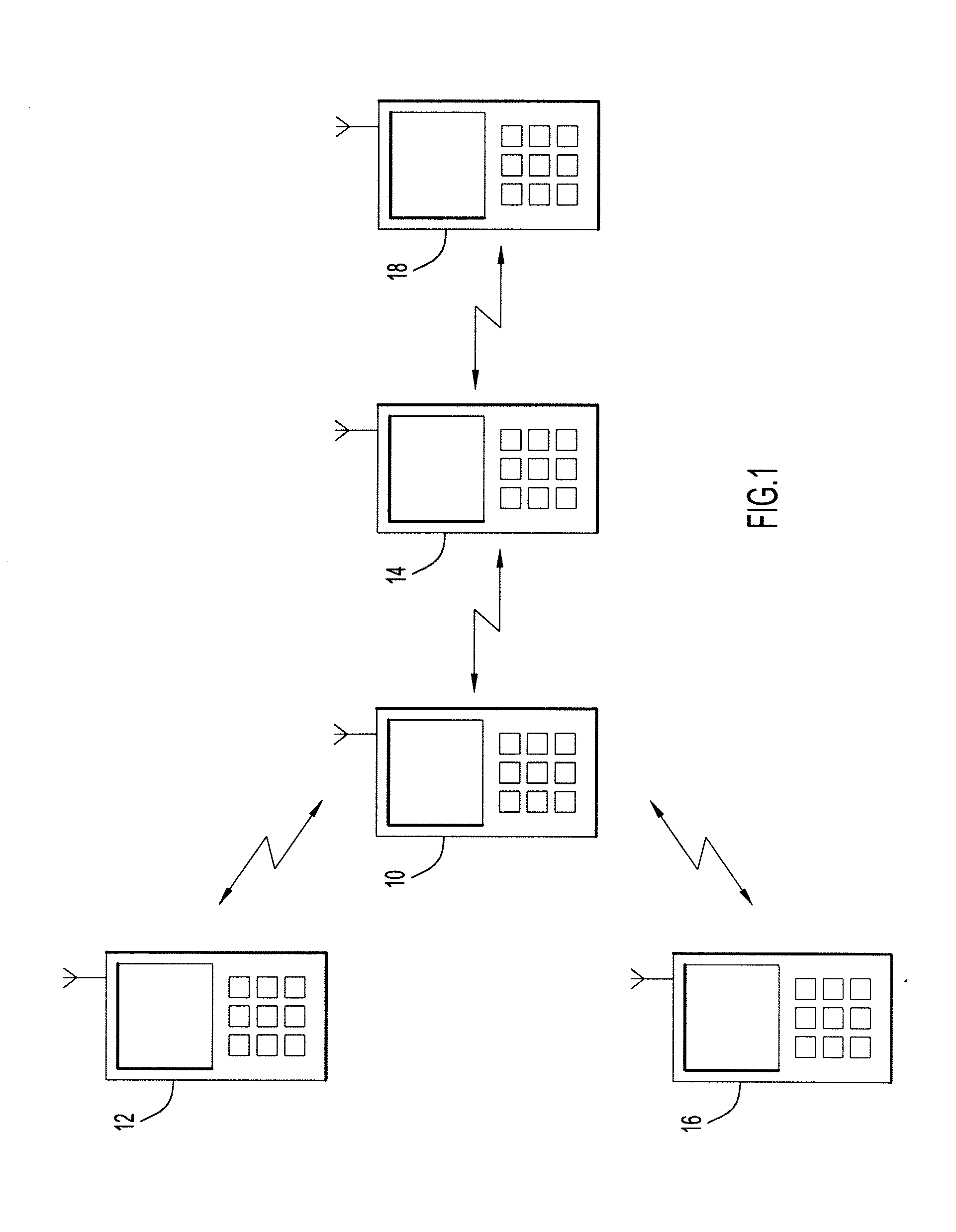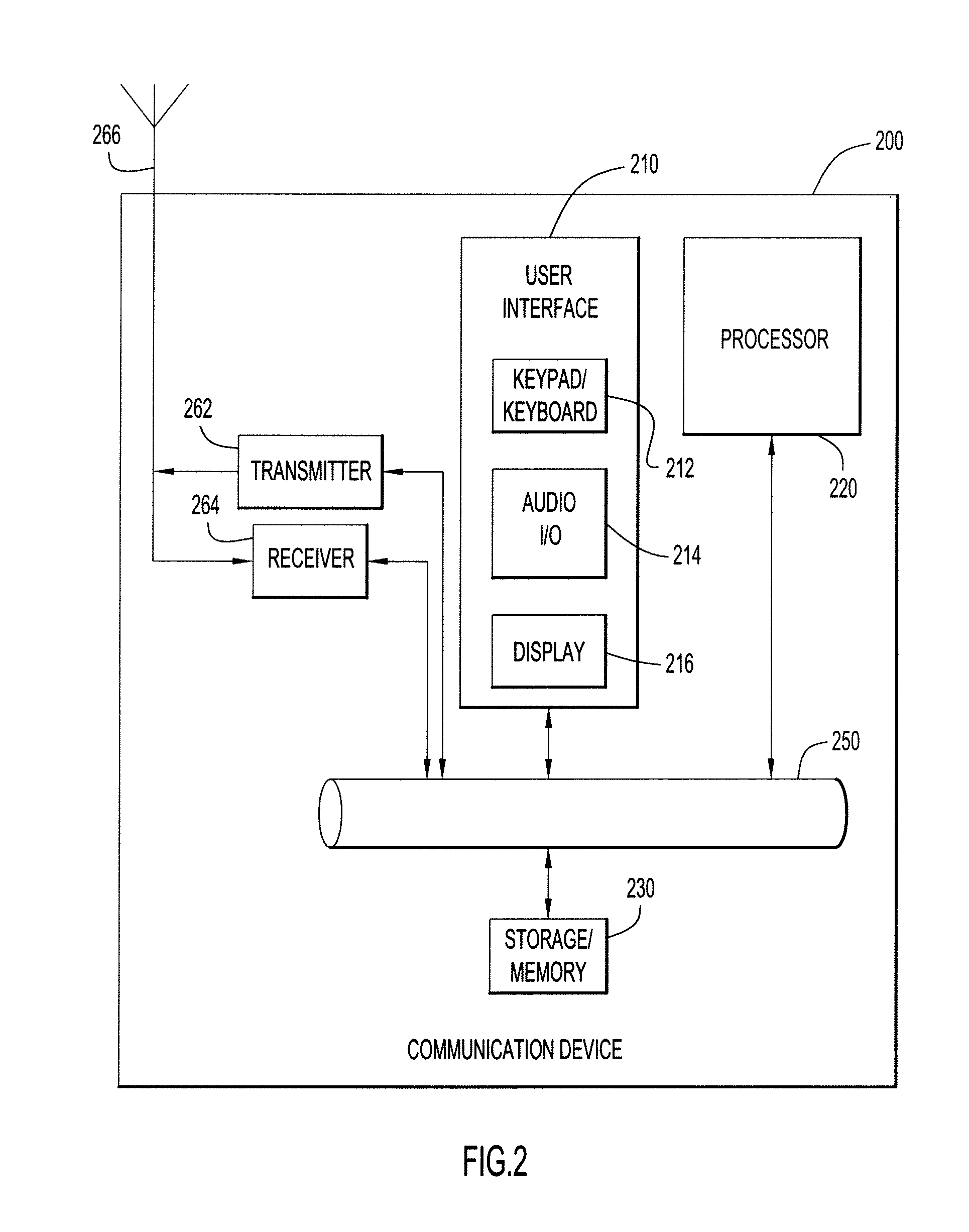Maintaining Time of Day Synchronization
a synchronization and day synchronization technology, applied in the direction of synchronization arrangement, frequency-division multiplex, instruments, etc., can solve the problems of reducing the throughput of data communication, few synchronization schemes proposed, and inability to maintain time synchronization in a tracking mod
- Summary
- Abstract
- Description
- Claims
- Application Information
AI Technical Summary
Benefits of technology
Problems solved by technology
Method used
Image
Examples
example 1
The following example helps illustrate the time synchronization techniques of the present invention in a TDMA environment. The techniques described in this example can be performed by one or more communication devices located at any point throughout the network environment, such as, but not limited to, one or more of the devices shown in FIG. 1 and FIG. 2.
This example assumes that the slot period, S, is 1.5 ms and that each epoch is 90 ms. The example further assumes that each super epoch has 4 epochs, so that N=4, and that at a time 360 sec is aligned with the super epoch boundary. Thus, each super epoch period is 0.36 sec. Timing signals are sent at the first two slots of each super epoch; thus, the points in time at which the timing packets could be sent are: 360 sec., 360.0015 sec., 360.36 sec., 360.3615 sec., 360.72 sec., 360.7215 sec., and so on. The example assumes a 10-node network with successful network formation in the acquisition mode and that all the clocks are synchron...
example 2
The following describes an example to illustrate the time synchronization techniques of the present invention in a CSMA environment. The techniques described in this example can be performed by one or more network devices located at any point throughout the network environment, such as, but not limited to, one or more of the devices shown in FIG. 1 and FIG. 2.
The same assumptions for Example 1, above, are incorporated herein. The available point-to-point packet transmission using CSMA / CA is considered as a bonus to computing the clock drift. Assume at T1=364.341 sec, node 5 sends point-to-point packet to node 4 and the propagation distance between node 5 and node 4 is again 1 km. The relationships among T1, T2, T3, and T4 are the same as in Example 1 and T2=364.34100533 sec, T3=364.34250533 sec and T4=364.34250666 sec. Node 5 first sends an RTS to node 4 at T1=364.341 sec. Node 4 responds with CTS to node 5 at T3, and node 5 receives the CTS at T4. Since there is no timing informati...
PUM
 Login to View More
Login to View More Abstract
Description
Claims
Application Information
 Login to View More
Login to View More - R&D
- Intellectual Property
- Life Sciences
- Materials
- Tech Scout
- Unparalleled Data Quality
- Higher Quality Content
- 60% Fewer Hallucinations
Browse by: Latest US Patents, China's latest patents, Technical Efficacy Thesaurus, Application Domain, Technology Topic, Popular Technical Reports.
© 2025 PatSnap. All rights reserved.Legal|Privacy policy|Modern Slavery Act Transparency Statement|Sitemap|About US| Contact US: help@patsnap.com



